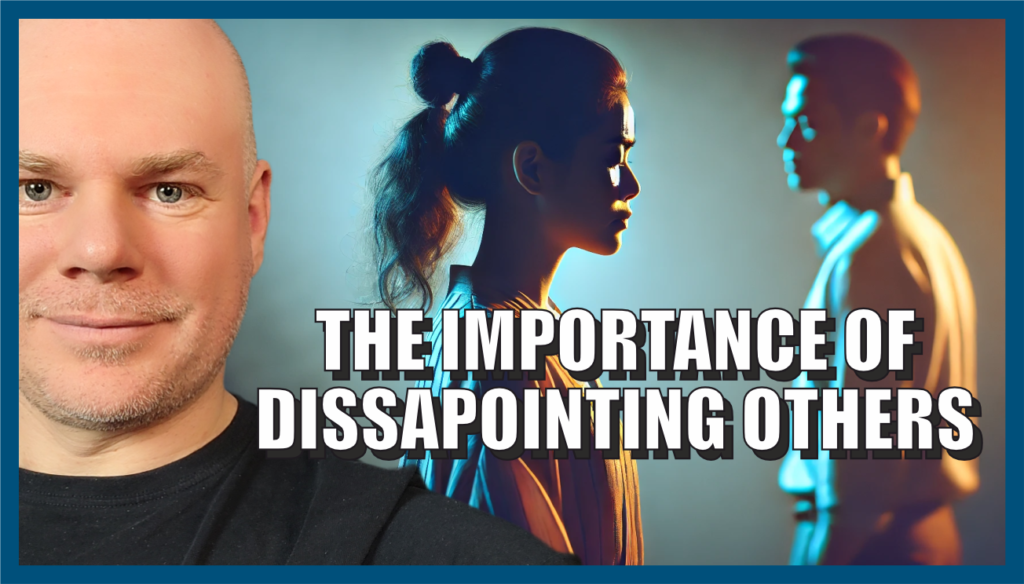As human beings, we navigate life through various lenses or perspectives. These perspectives shape our decisions, relationships, and overall approach to the world. But often, we aren’t fully aware of which perspective we’re living from or how it impacts our day-to-day lives.
In this blog post, we will explore four core perspectives that define how we engage with life—ranging from survival instincts to heart-centered living, to rational detachment, and, finally, to spiritual acceptance. Understanding these perspectives can provide greater self-awareness and improve how you interact with others.
1. Survival Mode: Driven by Fear and Self-Preservation
For many, survival mode is the default perspective. It’s a state where the primary focus is self-preservation. Even after thousands of years of human development and civilization, our biological instincts are wired to ensure survival, constantly on the lookout for safety and security.
People operating from survival mode often:
- Focus on self-preservation above all else
- Exhibit selfishness and competition
- Feel driven by fear, greed, and the need for control
- Struggle to trust others and are constantly on guard
This mode is not only about physical survival—it can manifest in emotional, financial, or social areas of life. Even wealthy or successful people may feel insecure and cling to material or emotional safety. This perspective can also be detrimental to relationships, as individuals in survival mode prioritize personal gain, often at the expense of empathy and connection.
2. Heart-Centered Living: Embracing Empathy and Connection
Shifting from survival mode into heart-centered living opens us up to a more fulfilling way of being. When living from the heart, we feel secure within ourselves and can engage with the world through empathy, love, and connection. The heart-centered perspective allows us to give rather than constantly seek to receive.
People in this mode often:
- Prioritize empathy and connection with others
- Are open to giving, sharing, and supporting others
- Feel secure and at peace, regardless of external circumstances
- Are brave enough to show vulnerability and embrace emotional openness
However, heart-centered living can also expose us to emotional pain. Being vulnerable means that we can be hurt by others, and that hurt can push us back into a defensive mindset if we’re not careful. But for those who live from this perspective, the rewards of connection, love, and emotional fulfillment far outweigh the risks.
3. The Head Space: Rational Detachment and Emotional Distance
For many, emotional pain or past hurt leads to a retreat into the headspace, where rationality and detachment replace emotional vulnerability. This perspective can be characterized by cold logic, decision-making without emotion, and living in the safety of intellectual ideals or principles.
People operating from the headspace often:
- Avoid emotional involvement to protect themselves from pain
- Rely on rationality and logic to make decisions, even if it hurts others
- Distance themselves from their feelings, creating a cold, detached demeanor
- Hide behind ideologies, beliefs, or principles to justify their decisions
This perspective can be particularly dangerous in leadership roles or relationships, as decisions made from this space tend to lack compassion. Those who live from the headspace may avoid emotional risks but sacrifice meaningful connections in the process.
4. Spiritual Perspective: Embracing the Bigger Picture
The rarest and most enlightened perspective is the spiritual one. From this vantage point, an individual is at peace with both the good and bad aspects of life, understanding that everything is interconnected and part of a greater whole. Living from a spiritual perspective allows someone to accept life as it is, without clinging to dualistic thinking (good vs. bad, success vs. failure).
People living from a spiritual perspective often:
- Embrace both the positive and negative aspects of life with equanimity
- Feel a deep sense of peace, even amidst chaos
- Have transcended the need for material success, emotional validation, or intellectual superiority
- See the world as interconnected, beyond personal interests or gain
This perspective requires great self-awareness, humility, and acceptance of life’s dualities. Few people operate consistently from this space, but it represents a harmonious balance of heart, mind, and spirit.
How We Shift Between These Perspectives
Although we may gravitate towards one dominant perspective, most of us shift between these modes depending on the situation. For example, someone may generally live from a heart-centered perspective but switch to survival mode when faced with financial insecurity. Or a rational, head-space thinker might dip into their heart during moments of deep connection or personal vulnerability.
Recognizing these shifts in ourselves and others is crucial. It allows us to better understand where someone is coming from in a particular moment and helps us cultivate empathy and patience in our relationships.

Conclusion: Discovering Your Dominant Perspective
Understanding the four perspectives of life—survival mode, heart-centered living, headspace, and spiritual awareness—can provide invaluable insight into how you live and how others engage with the world. By identifying which perspective you naturally gravitate toward, you can work towards a more balanced lifestyle, incorporating elements of empathy, rationality, and spiritual awareness as needed.
Whether you’re striving for more emotional connection, greater rational clarity, or a deeper spiritual understanding, each perspective offers valuable lessons for personal growth. The key is awareness—by knowing where you are, you can choose where you want to go.



